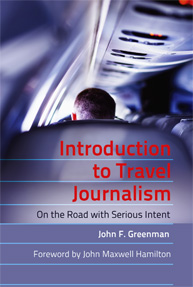Tourism is your destination’s villain
Posted: May 3, 2013 | Contents: Chapter 3 | Tags: Eco tourism, green tourism, Nomadic Matt, travel journalism, travel journalist, travel writer, travel writing, www.nomadicmatt.com Leave a comment »Chapter 3 of the text teaches the travel writer how to reach the audience for travel journalism. Nomadic Matt is a renown travel writer and blogger; he writes for his own website www.nomadicmatt.com. A few days ago Matt wrote a piece explaining why and how travel writers and subsequently tourists often destroy “those off the beaten track destinations, those little local restaurants and quiet parts of the city where you are free of tourists.” Within the article Matt argues compelling points, even including a before and after picture of Ko Phi Phi, a once beautiful lush island that is now “overdeveloped.” Matt expresses such logical concerns as, “By driving people to the next ‘undiscovered’ place, do I just ruin it? Will I be that guy who returns and says, ‘Man, this place used to be cool 10 years ago.” Matt eventually passes the brunt of the blame off to tourists; specifically Matt blames those tourists who “end up supporting unsustainable tourism practices,” Matt explains, “and that’s what really destroys a place.”
So Matt then ends the piece by doing what a responsible travel writer is to do, which is to encourage safer, greener, better travel practices for tourists. Matt’s initial concern however, is the villainous side of travel journalism and writing. No matter how sloppy a tourist is or how neatly and green a travel writer thinks she can travel, the bottom line is without initial publication, “those off the beaten track destinations, those little local restaurants and quiet parts of the city where you are free of tourists,” would still be free of tourists. Matt’s love for the destinations is what makes him selflessly want to share the beauty with others. However, if the goal is to share the “off the beaten track” aspect of a location with future generations one cannot begin beating the track. Tourism has a way of dulling a location’s luster, even removing its majesty– which seems to be the case with the Ko Phi Phi location. It is simply because of the increase in visitors that a place gets “ruined.” If all the visitors visit during one season which, is often the case with tourists, then large and many hotels and restaurants are going to be necessary to accommodate their sheer numbers. A harsh reality– check out Matt’s work here.
